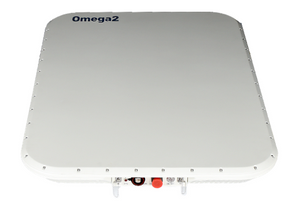
Global Konet
Global Konet MiNi ESA GU320-PAA-41-K Antenna
Request a quote at Contact@orbitalconnect.com or +1.888.315.9545
KONET MiNi ESA
An electronic beam steering antenna proven for export worldwide, boasting stable performance and strong power output.
MiNi ESA antenna features an EIRP of 41 dBW and a G/T of 8.5 dB/K, which is suitable for geostationary satellites (GEO). It proves that OTM services are possible while on the move, and is used on SUV and ships.
Full-Duplex ESA Antenna: Simultaneous Transmission and Reception
MiNi ESA antenna uses full-duplex to simultaneously transmit and receive, maximizing data throughput. This eliminates delays between data transmission and reception, and increases bandwidth efficiency in two-way communications.
Key benefits:
- More data to be processed faster
- Particularly advantageous for high-capacity data communications such as high-speed Internet, real-time streaming, and high-resolution video transmission
Full-duplex ESA antennas are highly compatible with next-generation communications technologies such as 5G and 6G. These technologies require high-speed data transmission and low latency, making full-duplex mode essential.
Excellent Alpha OTM antenna performance with fast beam switching speed
- Full Switching Time: <0.5ms
- Satellite Switching Time: <0.5ms
Fast beam switching speed enables satellites to track and communicate reliably in real time with fast-moving low Earth orbit satellite users or base stations. This is especially advantageous for communication with moving aircraft, ships, and vehicles.
Signal interference is a major problem in satellite communications. Fast beam switching speed allows signals from specific users to be quickly switched to another direction to minimize interference. This allows for cleaner and more stable communication signals.
Fast beam switching speed enables efficient allocation of network resources. Antennas can quickly switch beams as needed to optimize resources and improve the overall performance of the network.
Electronically steered beams without using traditional mechanical motors
The image shows a white, flat, rectangular antenna device mounted on a black tripod stand.
Key features:
- Without mechanical motors, ESA antennas have no moving parts, avoiding mechanical problems such as wear, failure, and maintenance. This greatly improves the reliability and lifespan of the antenna.
- Electronic beam steering is much faster than mechanical motors. This is a significant advantage in multi-satellite tracking, etc. The fast response speed minimizes communication delays and maximizes efficiency.
- Electronic control allows for very precise beam steering. This allows for precise control of the directionality and strength of the signal, minimizing interference and improving communication quality.
Antenna Frequency Spec
- Model: MiNi (GD320)
- Satellite Band: GEO/MEO/LEO Extend Ku Band
- Frequency Range: TX: 13.75 - 14.5GHz RX: 10.70 - 12.75GHz
Ant Transmit/Receive Performance
- EIRP (typical): Linear Pol: >41dBW/GHz@14.1GHz Circular Pol: >39dBW/GHz@14.1GHz
- G/T(typical): >8.5dB/K@11.7GHz@20°EL
- Vehicle Service: Open AMIP Support
- Marine Service: Open AMIP Support
Ant Electronic Beam Tracking
- Scanning Range: Azimuth: 0° - 360°, Elevation: 20° - 90°
- Polarization: Linear (H/V or LHC/RHC) Pol
- Cross Polarization: >30dB
- Pol Switching Time: <0.5ms
- New Beam Switching Time: <0.3ms
Ant environmental performance
- Initial dynamic satellite acquisition: ≤3 min
- Rated Voltage: 28V(19V - 31V)
- Weight: ≤11kg
- Dimension: 51 x 60 x 6cm
- Operation Temperature: -40°C - +55°C
KONET MiNi ESA
An electronic beam steering antenna proven for export worldwide, boasting stable performance and strong power output.
MiNi ESA antenna features an EIRP of 41 dBW and a G/T of 8.5 dB/K, which is suitable for geostationary satellites (GEO). It proves that OTM services are possible while on the move, and is used on SUV and ships.
Full-Duplex ESA Antenna: Simultaneous Transmission and Reception
MiNi ESA antenna uses full-duplex to simultaneously transmit and receive, maximizing data throughput. This eliminates delays between data transmission and reception, and increases bandwidth efficiency in two-way communications.
Key benefits:
- More data to be processed faster
- Particularly advantageous for high-capacity data communications such as high-speed Internet, real-time streaming, and high-resolution video transmission
Full-duplex ESA antennas are highly compatible with next-generation communications technologies such as 5G and 6G. These technologies require high-speed data transmission and low latency, making full-duplex mode essential.
Excellent Alpha OTM antenna performance with fast beam switching speed
- Full Switching Time: <0.5ms
- Satellite Switching Time: <0.5ms
Fast beam switching speed enables satellites to track and communicate reliably in real time with fast-moving low Earth orbit satellite users or base stations. This is especially advantageous for communication with moving aircraft, ships, and vehicles.
Signal interference is a major problem in satellite communications. Fast beam switching speed allows signals from specific users to be quickly switched to another direction to minimize interference. This allows for cleaner and more stable communication signals.
Fast beam switching speed enables efficient allocation of network resources. Antennas can quickly switch beams as needed to optimize resources and improve the overall performance of the network.
Electronically steered beams without using traditional mechanical motors
The image shows a white, flat, rectangular antenna device mounted on a black tripod stand.
Key features:
- Without mechanical motors, ESA antennas have no moving parts, avoiding mechanical problems such as wear, failure, and maintenance. This greatly improves the reliability and lifespan of the antenna.
- Electronic beam steering is much faster than mechanical motors. This is a significant advantage in multi-satellite tracking, etc. The fast response speed minimizes communication delays and maximizes efficiency.
- Electronic control allows for very precise beam steering. This allows for precise control of the directionality and strength of the signal, minimizing interference and improving communication quality.
Antenna Frequency Spec
- Model: MiNi (GD320)
- Satellite Band: GEO/MEO/LEO Extend Ku Band
- Frequency Range: TX: 13.75 - 14.5GHz RX: 10.70 - 12.75GHz
Ant Transmit/Receive Performance
- EIRP (typical): Linear Pol: >41dBW/GHz@14.1GHz Circular Pol: >39dBW/GHz@14.1GHz
- G/T(typical): >8.5dB/K@11.7GHz@20°EL
- Vehicle Service: Open AMIP Support
- Marine Service: Open AMIP Support
Ant Electronic Beam Tracking
- Scanning Range: Azimuth: 0° - 360°, Elevation: 20° - 90°
- Polarization: Linear (H/V or LHC/RHC) Pol
- Cross Polarization: >30dB
- Pol Switching Time: <0.5ms
- New Beam Switching Time: <0.3ms
Ant environmental performance
- Initial dynamic satellite acquisition: ≤3 min
- Rated Voltage: 28V(19V - 31V)
- Weight: ≤11kg
- Dimension: 51 x 60 x 6cm
- Operation Temperature: -40°C - +55°C
| Download Name | |
| Global Konet MiNi ESA Antenna Data Sheet | |



















